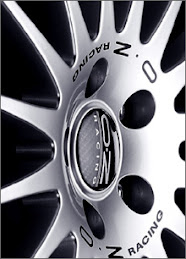Koenigsegg's design seeks to give an interpretation of strength and flowing motion. The body of a Koenigsegg is formed for one ultimate purpose; speed. Its beauty is the beauty of speed itself. The surfaces are shaped to perfectly aerodynamic, an appearance that does not deceive. All aspects of this machine serve its one fundamental objective. Both the body and chassis of a Koenigsegg are made of extremely lightweight carbon fibre composite, reinforced with Kevlar and aluminium honeycomb. Its race-bred suspension system brings the driver in control of all movement, even under the toughest racing conditions.
The car was styled by Christian von Koenigsegg himself but its shape is largely dictated by aerodynamics. It is not as striking as Pagani or Enzo. At some angles it even looks bulky, like a big whale. But the whale delivers a sense of power that you can't find in its rivals either. Because of the targeted top speed, the body is designed to be so smooth that it has a very low drag coefficient of 0.30. This is much lower than Enzo (0.36), SLR (0.37) and Carrera GT (0.39). Unsurprisingly, the downside is a rather low downforce, just 50kg at the front and 70kg at the back. For comparison, an Enzo generates 775kg while Pagani achieves 500kg.
The chassis is constructed like other supercars. Central to it is a carbon-fiber tub (Koenigsegg called it "semi-monocoque") attached with steel subframe up front and aluminum subframe at the rear for mounting engine, gearbox and suspensions. Chassis rigidity is 28,100Nm per degree despite of the targa roof. The whole bodyshell is also carbon-fiber. Koenigsegg claims a dry weight of 1175kg, which translates to 1275kg when fluid and fuel are loaded, i.e., what we usually refer to "kerb weight". In other words, CC8S is about as light as Pagani and Saleen S7, while being around 100 kilograms lighter than Enzo and Carrera GT.
| Koenigsegg CCR Data | | |
|---|---|---|
| Base Price | 595,000 $ | |
| Power | 806 hp | |
| Zero to 60 mph | 3.2 s | |
| Zero to 100 mph | N/A | |
| Top speed | 395 km/h (242 mph) | |
Koenigsegg, a small Swedish supercar maker, was founded by Christian von Koenigsegg in 1994. He was very young, just 22 years old then, but he succeeded to raise the required money to develop and polish the supercar in the following 8 years until the first CC8S delivered to client in March 2002. That's amazing. His biggest success was to get the Swedish public excited (it's the country's first supercar) and many Swedish component suppliers involved the project. In 2005 was an unbelievable day: Koenigsegg CCR broke the 7-year-old top speed record held by McLaren F1. The swedish supercar lapped Fiat's Nardo test track at 241.0 mph (387.9 kph), edging out the McLaren's 240.1 mph which was set in 1998.
The Koenigsegg CC interior seems merged with the exterior; the dynamic flow of lines and surfaces continue into the cabin and naturally bind them together. The layout is strictly symmetrical, with its elements mirrored on the centreline. All details are refined and the surfaces are cleaned of unnecessary obstructions. The focal point is the circular main control panel with its zodiac of multicolour lights and stainless steel buttons. In the very midpoint of the car is the turned gear lever; a flagpole topped by a gemstone carved with the Swedish colours. The main instrument cluster is mounted conveniently around the steering rod so that it always faces the driver. It is designed to be fully visible through the upper spokes of the steering wheel, giving the driver a complete overview.
It includes tachometer, indicators and an LCD unit giving full feed-back to the driver. The metal parts are of machined and anodized aluminium, giving them a frostlike sheen that makes them stand out against the leather background. Suede covers the dashboard and the muscle-like lower sections of the doors, serving to reduce sun glare and provide contrast to the composition. Ergonomics-engineers designed the carbon fibre chairs, which are fitted with Tempur for utmost comfort and flexibility. Their compactness leaves space for tall drivers, and they can be adjusted to offer a perfect driving position. This design fulfills the basic objective; to combine wild racing performance and comfortable everyday driving. Designer Joachim Nordwall came up with the original design concept of this interior
| Koenigsegg official website |





















No comments:
Post a Comment